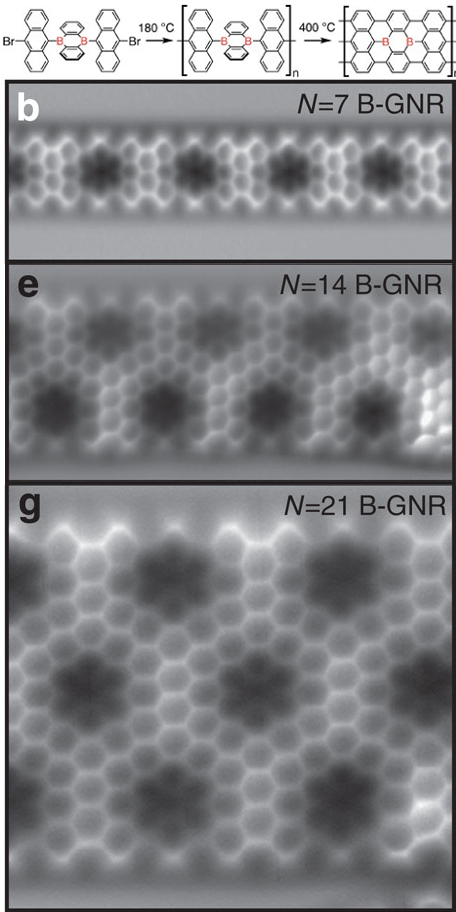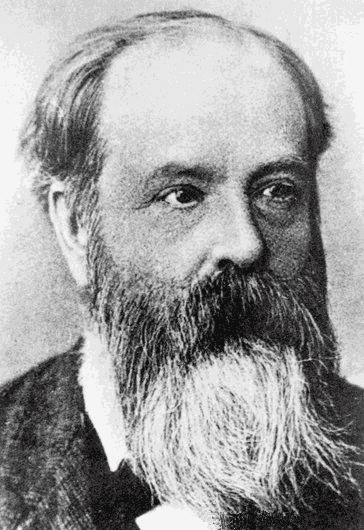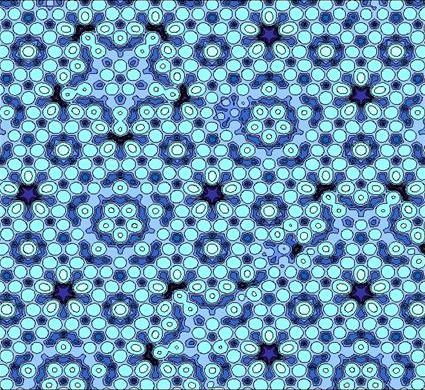|
Godfrey Gumbs
Godfrey Gumbs is a professor of theoretical solid state physics. He is a distinguished professor of physics at Hunter College of the City University of New York (CUNY) and the Maria A. Chianta and Alice M. Stoll Professor of Physics at Hunter College, CUNYhttp://www.hunter.cuny.edu/physics/faculty/gumbs/awards-honors] Gumbs was awarded a Guyana Scholarship to Trinity College, Cambridge University in 1968 and then went on to receive his Ph.D. in theoretical solid state physics (now commonly known as the physics of condensed matter) from the University of Toronto in 1978. From 1978 to 1982, he was a research associate at the National Research Council of Canada in Ottawa. From 1982 to 1989, he was a Natural Sciences and Engineering Research Council of Canada University research fellow, serving as both assistant and associate professor. Gumbs has taught at Hunter College and the CUNY Graduate Center since 1992. His research focuses primarily on nanophysics, especially the way in ... [...More Info...] [...Related Items...] OR: [Wikipedia] [Google] [Baidu] |
Solid-state Physics
Solid-state physics is the study of rigid matter, or solids, through methods such as quantum mechanics, crystallography, electromagnetism, and metallurgy. It is the largest branch of condensed matter physics. Solid-state physics studies how the large-scale properties of solid materials result from their atomic-scale properties. Thus, solid-state physics forms a theoretical basis of materials science. It also has direct applications, for example in the technology of transistors and semiconductors. Background Solid materials are formed from densely packed atoms, which interact intensely. These interactions produce the mechanical (e.g. hardness and Elasticity (physics), elasticity), Heat conduction, thermal, Electrical conduction, electrical, Magnetism, magnetic and Crystal optics, optical properties of solids. Depending on the material involved and the conditions in which it was formed, the atoms may be arranged in a regular, geometric pattern (crystal, crystalline solids, ... [...More Info...] [...Related Items...] OR: [Wikipedia] [Google] [Baidu] |
Graphene Nanoribbons
Graphene nanoribbons (GNRs, also called nano-graphene ribbons or nano-graphite ribbons) are strips of graphene with width less than 100 nm. Graphene ribbons were introduced as a theoretical model by Mitsutaka Fujita and coauthors to examine the edge and nanoscale size effect in graphene. Production Nanotomy Large quantities of width-controlled GNRs can be produced via graphite nanotomy, where applying a sharp diamond knife on graphite produces graphite nanoblocks, which can then be exfoliated to produce GNRs as shown by Vikas Berry. GNRs can also be produced by "unzipping" or axially cutting nanotubes. In one such method multi-walled carbon nanotubes were unzipped in solution by action of potassium permanganate and sulfuric acid. In another method GNRs were produced by plasma etching of nanotubes partly embedded in a polymer film. More recently, graphene nanoribbons were grown onto silicon carbide (SiC) substrates using ion implantation followed by vacuum or laser a ... [...More Info...] [...Related Items...] OR: [Wikipedia] [Google] [Baidu] |
Alumni Of Trinity College, Cambridge
Alumni (singular: alumnus (masculine) or alumna (feminine)) are former students of a school, college, or university who have either attended or graduated in some fashion from the institution. The feminine plural alumnae is sometimes used for groups of women. The word is Latin and means "one who is being (or has been) nourished". The term is not synonymous with "graduate"; one can be an alumnus without graduating (Burt Reynolds, alumnus but not graduate of Florida State, is an example). The term is sometimes used to refer to a former employee or member of an organization, contributor, or inmate. Etymology The Latin noun ''alumnus'' means "foster son" or "pupil". It is derived from PIE ''*h₂el-'' (grow, nourish), and it is a variant of the Latin verb ''alere'' "to nourish".Merriam-Webster: alumnus .. Separate, but from the s ... [...More Info...] [...Related Items...] OR: [Wikipedia] [Google] [Baidu] |
Guyanese Scientists
Guyanese may refer to: * Something of, from, or related to the country of Guyana * A person from Guyana, or of Guyanese descent. For information about the Guyanese people, see: ** Guyanese people ** Demographics of Guyana ** Culture of Guyana * Guyanese cuisine * Guyanese Creole See also *Guianese French Guiana ( or ; french: link=no, Guyane ; gcr, label= French Guianese Creole, Lagwiyann ) is an overseas department/region and single territorial collectivity of France on the northern Atlantic coast of South America in the Guianas. It ..., of from, or related to the country of French Guiana {{disambig Language and nationality disambiguation pages ... [...More Info...] [...Related Items...] OR: [Wikipedia] [Google] [Baidu] |
Fulbright Program
The Fulbright Program, including the Fulbright–Hays Program, is one of several United States Cultural Exchange Programs with the goal of improving intercultural relations, cultural diplomacy, and intercultural competence between the people of the United States and other countries, through the exchange of persons, knowledge, and skills. Via the program, competitively-selected American citizens including students, scholars, teachers, professionals, scientists, and artists may receive scholarships or grants to study, conduct research, teach, or exercise their talents abroad; and citizens of other countries may qualify to do the same in the United States. The program was founded by United States Senator J. William Fulbright in 1946 and is considered to be one of the most widely recognized and prestigious scholarships in the world. The program provides approximately 8,000 grants annually – roughly 1,600 to U.S. students, 1,200 to U.S. scholars, 4,000 to foreign students, 900 to f ... [...More Info...] [...Related Items...] OR: [Wikipedia] [Google] [Baidu] |
Alexander Von Humboldt Fellow
The Alexander von Humboldt Foundation (german: Alexander von Humboldt-Stiftung) is a foundation established by the government of the Federal Republic of Germany and funded by the Federal Foreign Office, the Federal Ministry of Education and Research, the Federal Ministry for Economic Cooperation and Development as well as other national and international partners; it promotes international academic cooperation between excellent scientists and scholars from Germany and from abroad. Description Every year, the Foundation grants more than 700 competitive research fellowships and awards, primarily going to academics from natural sciences (mathematics included) and the humanities. It allows scientists and scholars from all over the world to come to Germany to work on a research project they have chosen themselves together with a host and collaborative partner. Additionally it funds German scholars' via the Feodor Lynen Fellowships to go anywhere in the world to work on a research proj ... [...More Info...] [...Related Items...] OR: [Wikipedia] [Google] [Baidu] |
Theoretical Physics
Theoretical physics is a branch of physics that employs mathematical models and abstractions of physical objects and systems to rationalize, explain and predict natural phenomena. This is in contrast to experimental physics, which uses experimental tools to probe these phenomena. The advancement of science generally depends on the interplay between experimental studies and theory. In some cases, theoretical physics adheres to standards of mathematical rigour while giving little weight to experiments and observations.There is some debate as to whether or not theoretical physics uses mathematics to build intuition and illustrativeness to extract physical insight (especially when normal experience fails), rather than as a tool in formalizing theories. This links to the question of it using mathematics in a less formally rigorous, and more intuitive or heuristic way than, say, mathematical physics. For example, while developing special relativity, Albert Einstein was concerned wit ... [...More Info...] [...Related Items...] OR: [Wikipedia] [Google] [Baidu] |
New York Academy Of Sciences
The New York Academy of Sciences (originally the Lyceum of Natural History) was founded in January 1817 as the Lyceum of Natural History. It is the fourth oldest scientific society in the United States. An independent, nonprofit organization with more than members in 100 countries, the academy has a mission to advance scientific research and knowledge, support scientific literacy, and promote science-based solutions to global challenges. The academy hosts programs and publishes scholarly scientific content in the life, physical, and social sciences, including several areas of cross-discipline inquiry such as nutrition, artificial intelligence, space exploration, and sustainability. The academy's programs and publications are designed to discuss and disseminate accurate and timely scientific information to its members, the broad scientific community, the media, and the public. The academy also provides professional and educational resources for researchers across all phases of the ... [...More Info...] [...Related Items...] OR: [Wikipedia] [Google] [Baidu] |
Institute Of Physics
The Institute of Physics (IOP) is a UK-based learned society and professional body that works to advance physics education, research and application. It was founded in 1874 and has a worldwide membership of over 20,000. The IOP is the Physical Society for the UK and Ireland and supports physics in education, research and industry. In addition to this, the IOP provides services to its members including careers advice and professional development and grants the professional qualification of Chartered Physicist (CPhys), as well as Chartered Engineer (CEng) as a nominated body of the Engineering Council. The IOP's publishing company, IOP Publishing, publishes 85 academic titles. History The Institute of Physics was formed in 1960 from the merger of the Physical Society, founded as the Physical Society of London in 1874, and the Institute of Physics, founded in 1918. The Physical Society of London had been officially formed on 14 February 1874 by Frederick Guthrie, following ... [...More Info...] [...Related Items...] OR: [Wikipedia] [Google] [Baidu] |
American Physical Society
The American Physical Society (APS) is a not-for-profit membership organization of professionals in physics and related disciplines, comprising nearly fifty divisions, sections, and other units. Its mission is the advancement and diffusion of knowledge of physics. The society publishes more than a dozen scientific journals, including the prestigious '' Physical Review'' and ''Physical Review Letters'', and organizes more than twenty science meetings each year. APS is a member society of the American Institute of Physics. Since January 2021 the organization has been led by chief executive officer Jonathan Bagger. History The American Physical Society was founded on May 20, 1899, when thirty-six physicists gathered at Columbia University for that purpose. They proclaimed the mission of the new Society to be "to advance and diffuse the knowledge of physics", and in one way or another the APS has been at that task ever since. In the early years, virtually the sole activity of the AP ... [...More Info...] [...Related Items...] OR: [Wikipedia] [Google] [Baidu] |
Research Fellow
A research fellow is an academic research position at a university or a similar research institution, usually for academic staff or faculty members. A research fellow may act either as an independent investigator or under the supervision of a principal investigator. Although research fellow positions vary in different countries and academic institutions, it is in general that they are junior researchers who try to develop their research careers under the guidance of senior researchers. United Kingdom In many universities this position is a career grade of a ''Research Career Pathway'', following on from a postdoctoral position such as research associate, and may be open-ended, subject to normal probation regulations. Within such a path, the next two higher career grades are usually senior research fellow and professorial fellow. Although similar to the position of a research fellow, these two positions are research only posts, with the rise of the career grade there will normal ... [...More Info...] [...Related Items...] OR: [Wikipedia] [Google] [Baidu] |
Quasicrystals
A quasiperiodic crystal, or quasicrystal, is a structure that is ordered but not periodic. A quasicrystalline pattern can continuously fill all available space, but it lacks translational symmetry. While crystals, according to the classical crystallographic restriction theorem, can possess only two-, three-, four-, and six-fold rotational symmetries, the Bragg diffraction pattern of quasicrystals shows sharp peaks with other symmetry orders—for instance, five-fold. Aperiodic tilings were discovered by mathematicians in the early 1960s, and, some twenty years later, they were found to apply to the study of natural quasicrystals. The discovery of these aperiodic forms in nature has produced a paradigm shift in the field of crystallography. In crystallography the quasicrystals were predicted in 1981 by a five-fold symmetry study of Alan Lindsay Mackay,—that also brought in 1982, with the crystallographic Fourier transform of a Penrose tiling,Alan L. Mackay, "Crystallography ... [...More Info...] [...Related Items...] OR: [Wikipedia] [Google] [Baidu] |







